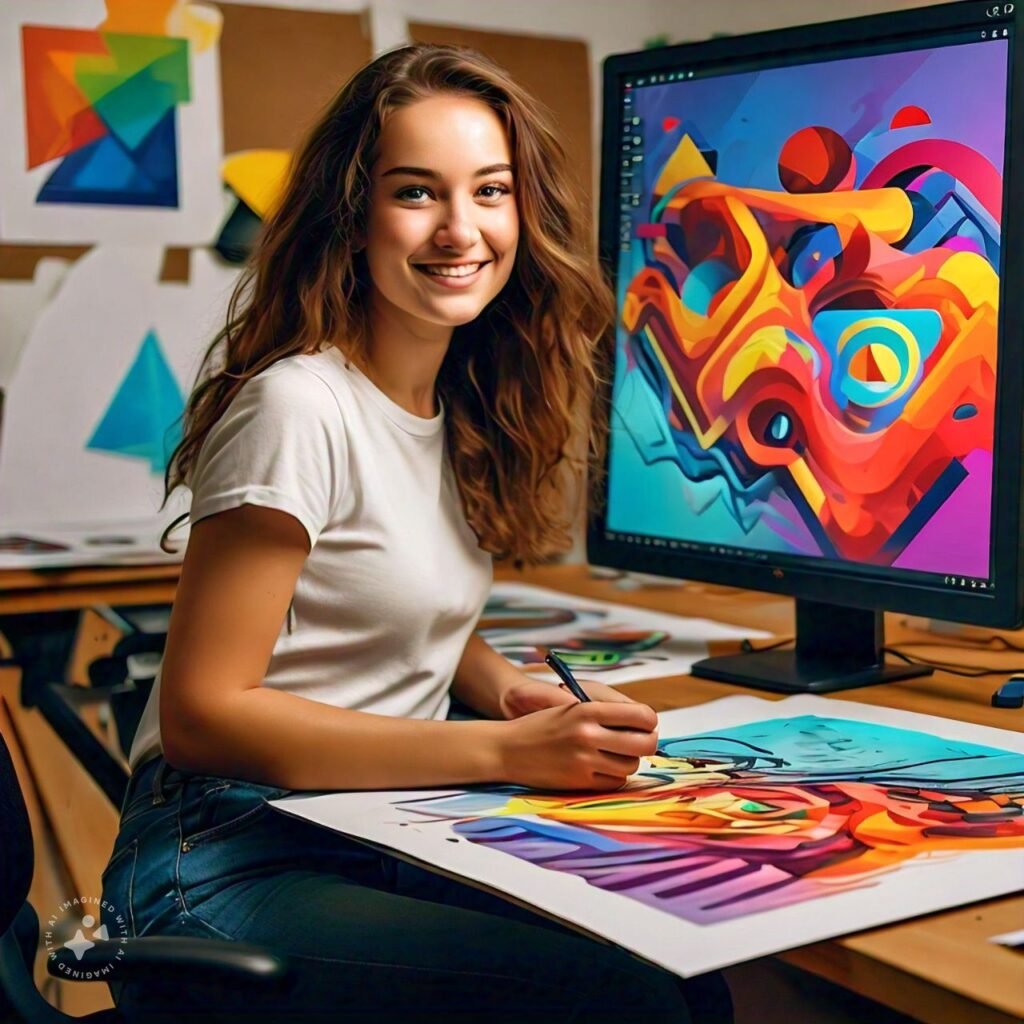The Power of Visuals in Digital Communication
Visuals are more than just eye-catching; they play a vital role in communication by improving understanding, retention, and interaction with your content. Studies show that people process images faster than text, and visuals can increase engagement significantly. Whether it’s a striking infographic or a custom banner, graphics capture attention, convey information effectively, and leave a lasting impression.


In the digital age, visuals are non-negotiable. With the right tools and techniques, you can create stunning graphics that drive conversions, engage your audience, and communicate your message clearly.
Common Types of Graphics You Can Create for Any Page
From banners to infographics, there are numerous types of graphics you can create to meet the specific needs of different platforms and pages. Each graphic serves a unique purpose, whether you’re designing for a website, social media post, or email campaign.
Website Graphics: Think of logos, headers, banners, or hero images that define the look and feel of a site. These are crucial for first impressions.
Social Media Graphics: From Instagram posts to Facebook covers, graphics optimized for different social media platforms can enhance engagement and ensure your brand stands out.
Infographics: A powerful way to present data and complex information in an easily digestible format. Infographics are perfect for blog posts, presentations, and social media.


Email Campaign Graphics: Email visuals, including banners and call-to-action buttons, can increase click-through rates and make your email campaigns more appealing.
Presentation Slides: Graphics designed for PowerPoint or other presentation software can make your talks more compelling and professional.
Step-by-Step: How to Create Graphics in Minutes
Creating professional-grade visuals doesn’t have to be a time-consuming process—here’s a quick guide to designing graphics efficiently.
- Step 1: Choosing the Right Graphic Tool First, select a graphic design tool that fits your needs. Whether you’re using Canva, Adobe Spark, or Crello, pick a platform that offers templates and customization options suitable for your project.
- Step 2: Picking a Template or Starting from Scratch Most tools offer a wide range of templates for every type of graphic. Choose a pre-designed template to speed up the process, or start from scratch if you have a specific vision in mind.


Step 3: Customizing Your Graphic with Text and Images After selecting your template, customize it with your text, fonts, and colors to match your branding. Incorporate high-quality images that reinforce your message.
Step 4: Optimizing for Different Page Types Ensure your graphic is optimized for the platform or page you’re designing for. For example, social media graphics may need specific dimensions and file sizes, while website graphics should load quickly without compromising quality.
Essential Tools for Fast Graphic Creation
With the right tools at your disposal, designing graphics becomes a breeze—here are some of the best tools for creating any type of graphic quickly and easily:
Click Designs: The #1 Design Software Of All Time For EVERYONE. Create Any Type Of Graphic for ANY Type
Of Page In Minutes.
Piktochart: Ideal for creating infographics and data-driven visuals, perfect for presenting information in a visually appealing way.


Adobe Spark: Great for creating branded graphics, videos, and web pages with ease, especially for users familiar with Adobe’s ecosystem.
Crello: Similar to Canva, Crello offers a range of templates and design elements that make graphic creation fast and simple.
Stencil: Focused on social media, Stencil allows you to create quick and engaging posts with minimal effort.
Canva: A versatile, beginner-friendly tool with thousands of customizable templates for every platform and type of graphic.
Top Tips for Creating Professional Graphics in Less Time
Time is valuable, so here are some proven tips to help you create professional, polished graphics in record time:
Use Pre-designed Templates: Templates save time and offer a polished starting point, especially if you’re new to design.


Master Shortcuts for Efficiency: Learning shortcuts and hotkeys for your chosen design software can greatly speed up the process.
Maintain Consistency with Brand Colors and Fonts: Stick to your brand’s style guide to create a cohesive and professional look across all your graphics.
Incorporate High-Quality Images: Using high-resolution images or icons instantly elevates the quality of your designs and makes them look more professional.
How to Tailor Graphics for Different Pages and Platforms
Every platform has unique requirements for graphics, so it’s essential to adapt your visuals to suit the specific page or medium you’re using.
Web Pages vs. Social Media: Website graphics often need to be more formal and detailed, while social media graphics should be concise, bold, and designed to capture attention quickly.
Optimizing for Mobile: As mobile traffic increases, ensure your graphics are mobile-responsive, especially when designing for websites and emails.


Using Responsive Design: Design graphics that adjust to different screen sizes, ensuring your visuals look good on both desktop and mobile.
Elevate Your Pages with Quick and Effective Graphics
By leveraging fast, easy-to-use tools and applying best practices, you can create any type of graphic in minutes, enhancing the visual appeal of your pages without sacrificing quality. Whether you’re designing for a website, social media, or an email campaign, quick graphic creation can save you time while delivering professional, impactful visuals that resonate with your audience.

